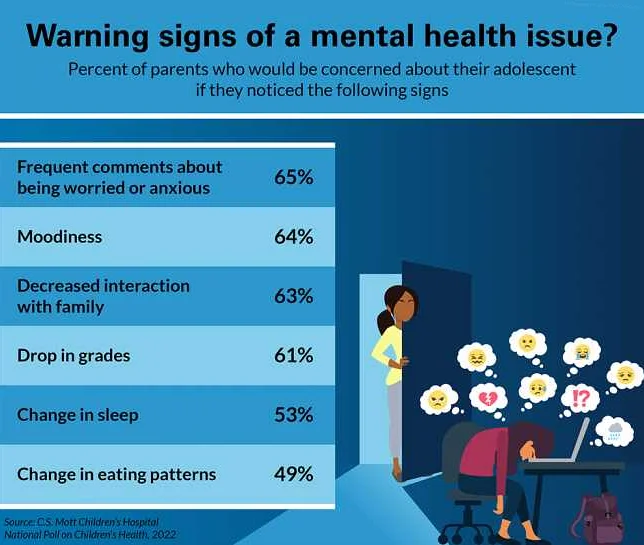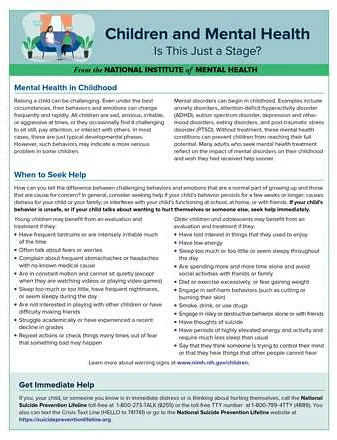Understanding Mental Disorders in Children and Adolescents: A Comprehensive Guide
Содержимое
Learn about common mental disorders that affect children and adolescents, including symptoms, causes, and treatment options. Understand the impact these disorders can have on a child’s development and how to seek support and help for your child.
Welcome to our comprehensive guide on understanding mental disorders in children and adolescents. Mental health is an integral aspect of overall well-being, and it is crucial to recognize and address mental disorders in young individuals. This guide will provide you with a deep understanding of various mental disorders commonly observed in children and adolescents, their symptoms, causes, and available treatment options.
Children and adolescents are not immune to mental health issues, and it is important to acknowledge and address their unique challenges. Whether it is anxiety, depression, ADHD, or autism spectrum disorder, mental disorders can significantly impact a young person’s social, emotional, and academic development. Our aim is to equip parents, educators, and healthcare professionals with the knowledge and resources necessary to identify and support children and adolescents struggling with mental health concerns.
Throughout this guide, we will explore the different types of mental disorders, their prevalence in children and adolescents, and the potential risk factors that contribute to their development. We will delve into the symptoms and signs that may indicate a mental disorder, as well as the importance of early intervention and treatment. Additionally, we will discuss various evidence-based therapeutic approaches and interventions that can help improve the mental well-being of young individuals.
Understanding mental disorders in children and adolescents is a complex process that requires compassion, patience, and a multidisciplinary approach. By gaining a comprehensive understanding of these conditions, we can create a supportive and nurturing environment that fosters the emotional, social, and cognitive growth of our young generation. Join us on this informative journey as we strive to promote mental health and well-being among children and adolescents.
Understanding Mental Disorders in Children

Understanding mental disorders in children is crucial for parents and caregivers. It is estimated that one in six children aged 2 to 8 years old has a mental, behavioral, or developmental disorder. These disorders can have a significant impact on a child’s ability to function in daily life and can affect their emotional, cognitive, and social development.
There are various types of mental disorders that can occur in children, including anxiety disorders, attention-deficit/hyperactivity disorder (ADHD), autism spectrum disorder (ASD), depression, and conduct disorder. Each disorder has its own unique symptoms and diagnostic criteria.
Anxiety disorders in children are characterized by excessive worry, fear, or distress that interferes with daily activities. Children with ADHD have difficulty paying attention, staying focused, and controlling impulsive behaviors. ASD is a developmental disorder that affects a child’s social interaction, communication, and behavior. Children with depression may experience persistent feelings of sadness, loss of interest, and changes in sleep or appetite. Conduct disorder is marked by a pattern of aggressive and antisocial behavior.
Early identification and intervention are essential for children with mental disorders. Parents and caregivers play a vital role in recognizing the signs and seeking appropriate help. Treatment options for children with mental disorders may include therapy, medication, or a combination of both. It is important to work closely with healthcare professionals to develop a comprehensive treatment plan that meets the specific needs of the child.
Understanding mental disorders in children requires ongoing education and awareness. By educating ourselves and others, we can promote early detection, reduce stigma, and provide support to children and families affected by these conditions. With the right resources and support, children with mental disorders can lead fulfilling lives and reach their full potential.
In conclusion, understanding mental disorders in children is a crucial step in providing them with the help and support they need. Through education and awareness, we can create a society that is more compassionate and inclusive for children with mental disorders.
Demystifying Childhood Mental Health
Childhood mental health is a complex and often misunderstood topic. Many parents and caregivers may not fully understand the signs and symptoms of mental disorders in children and adolescents, which can lead to delayed diagnosis and treatment. In order to provide the best support and care for young people, it is important to demystify childhood mental health and educate ourselves on the common disorders and their impact.
A good starting point is to understand that mental disorders in children and adolescents are real and legitimate health conditions. They are not a result of bad parenting or a lack of discipline. These disorders can have a significant impact on a child’s daily functioning, academic performance, and overall quality of life.
One common misconception is that childhood mental health disorders are rare. In reality, they are quite prevalent. According to the National Institute of Mental Health, about one in five children and adolescents in the United States have a mental disorder in any given year. These disorders can range from anxiety and depression to attention deficit hyperactivity disorder (ADHD) and autism spectrum disorders.
Recognizing the signs and symptoms of childhood mental health disorders is crucial for early intervention and treatment. Some common signs may include persistent sadness, irritability, changes in appetite or sleep patterns, difficulty concentrating, and withdrawal from social activities. It is important to note that these symptoms may vary depending on the specific disorder and the individual child.
Another important aspect to consider is the impact of stigma on childhood mental health. Stigma can create barriers to seeking help and can contribute to feelings of shame and isolation for children and their families. By demystifying childhood mental health, we can work towards reducing stigma and promoting a more understanding and supportive environment for young people.
Understanding the various treatment options available for childhood mental health disorders is also crucial. These may include therapy, medication, and lifestyle changes. It is important to work closely with healthcare professionals to determine the most appropriate treatment plan for each individual child.
| Anxiety Disorders | Excessive worry, fear, or panic; avoidance of certain situations |
| Depressive Disorders | Persistent sadness, loss of interest or pleasure, changes in appetite or sleep |
| Attention Deficit Hyperactivity Disorder (ADHD) | Inattention, hyperactivity, impulsivity |
| Autism Spectrum Disorders | Difficulty with social interaction, repetitive behaviors, restricted interests |
In conclusion, demystifying childhood mental health is essential for understanding and addressing the needs of children and adolescents with mental disorders. By educating ourselves and challenging misconceptions, we can create a more supportive and inclusive environment for young people to thrive.
Identifying Common Mental Disorders in Children

Identifying common mental disorders in children is crucial for early intervention and effective treatment. While it’s important to remember that every child is unique and may exhibit different signs and symptoms, there are some common mental disorders that tend to occur in childhood.
One common mental disorder in children is attention-deficit/hyperactivity disorder (ADHD). Children with ADHD often struggle with inattention, impulsivity, and hyperactivity. They may have difficulty paying attention in school, following instructions, and staying still or quiet. It’s important to note that ADHD can vary in severity, and symptoms may change as the child grows.
Anxiety disorders are another common mental disorder in children. These disorders can manifest in various ways, such as generalized anxiety disorder, separation anxiety disorder, and social anxiety disorder. Children with anxiety disorders may exhibit excessive worry, fear, and avoidance of certain situations. They may also experience physical symptoms like headaches or stomachaches.
Depression is another mental disorder that can affect children. While it’s normal for children to experience occasional sadness or mood swings, persistent feelings of sadness, hopelessness, or irritability may be signs of depression. Other symptoms may include changes in appetite or sleep patterns, loss of interest in previously enjoyed activities, and difficulty concentrating.
Autism spectrum disorder (ASD) is a neurodevelopmental disorder that can be diagnosed in early childhood. Children with ASD may have difficulties with social interaction, communication, and repetitive behaviors. They may struggle with understanding and expressing emotions, and may have specific interests or routines that they prefer to stick to.
It’s important to remember that the identification of mental disorders in children should be made by a qualified healthcare professional. If you have concerns about your child’s mental health, it’s best to seek the guidance of a pediatrician or mental health specialist.
Early identification and intervention can make a significant difference in a child’s long-term well-being and functioning. By understanding and recognizing the signs and symptoms of common mental disorders in children, parents, teachers, and healthcare professionals can work together to provide the necessary support and resources for children to thrive.